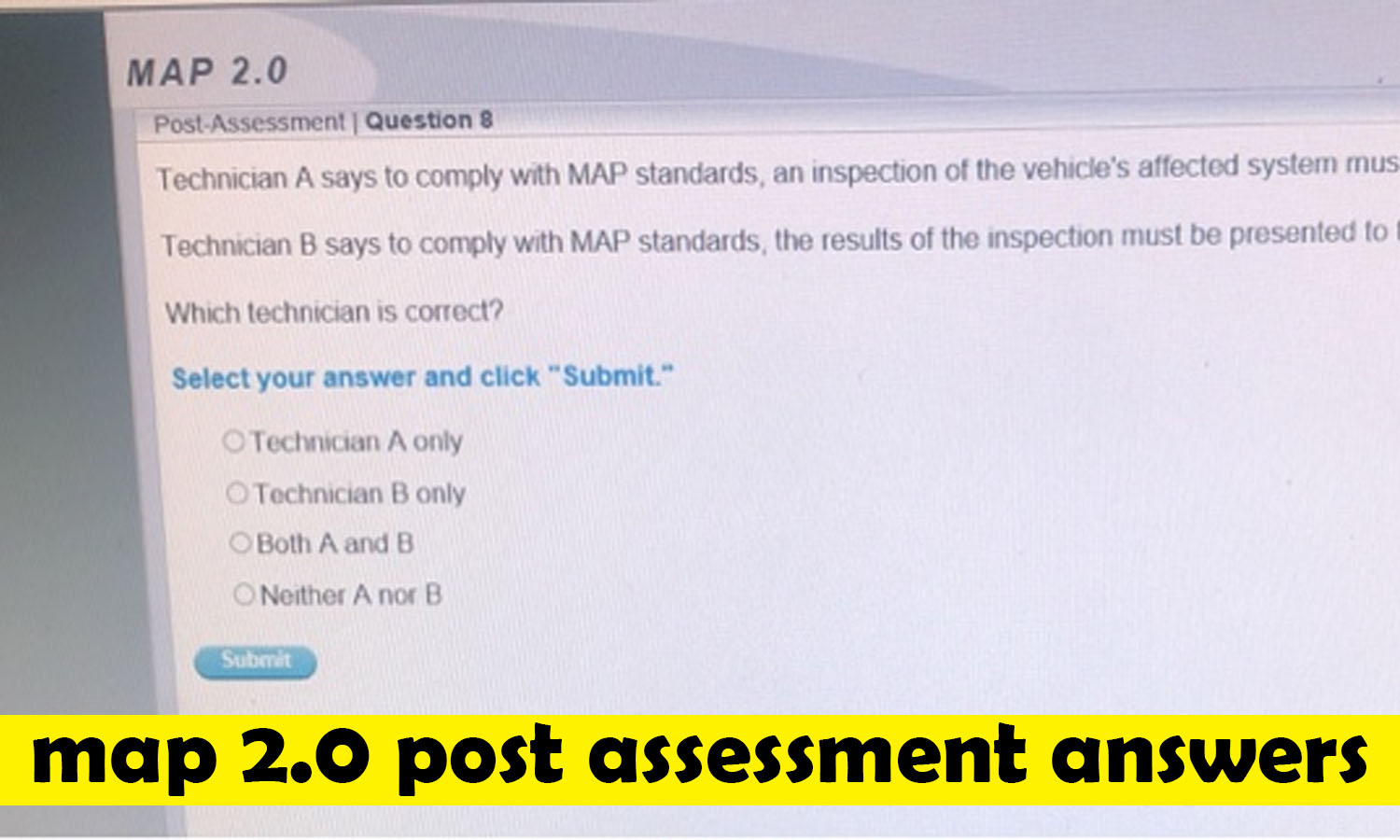News
Unlocking Your Child’s Potential: Map 2.0 post assessment answers

- Share
- Tweet /home/u433845138/domains/newsmm.co.uk/public_html/wp-content/plugins/mvp-social-buttons/mvp-social-buttons.php on line 71
https://newsmm.co.uk/wp-content/uploads/2025/07/bb-b-13-1000x600.jpg&description=Unlocking Your Child’s Potential: Map 2.0 post assessment answers', 'pinterestShare', 'width=750,height=350'); return false;" title="Pin This Post">
As parents and educators, we’re all deeply invested in a child’s learning journey. We want to understand their progress, identify areas where they shine, and provide support where they might need a little extra help. In today’s educational landscape, assessments play a crucial role in providing these insights. One assessment that many students encounter is the NWEA MAP Growth test, often referred to in discussions as “MAP 2.0.”
You might have heard about the “MAP 2.0 post assessment answers” and wondered what they are and how to access them. It’s natural to want to see the specific questions your child answered and the correct responses. However, when it comes to the MAP Growth test, the concept of a traditional “answer key” is a bit different. Let’s dive into what the MAP Growth test is all about, why official answer keys aren’t typically provided, and most importantly, how you can understand your child’s results to truly unlock their learning potential.
Understanding the NWEA MAP Growth Test
The Measures of Academic Progress (MAP) Growth test, developed by the Northwest Evaluation Association (NWEA), is a computer-adaptive assessment. This means that the test adjusts its difficulty based on your child’s responses. If they answer a question correctly, the next question might be a bit more challenging. If they answer incorrectly, the following question might be easier. This adaptive nature allows the test to pinpoint your child’s current academic level more accurately than a fixed-difficulty test.
The MAP Growth test is typically administered multiple times throughout the school year – often in the fall, winter, and spring. This allows educators and parents to track a child’s academic growth over time, hence the name “Growth” test. It’s not designed as a pass or fail exam but rather as a tool to provide valuable information about what your child knows and is ready to learn next.
The test covers several subject areas, primarily:

- Reading: This section assesses various skills, including phonological awareness (especially in younger grades), word recognition, understanding the meaning of words and phrases, comprehension of literary texts (like stories and poems), and comprehension of informational texts (like articles and reports).
- Mathematics: The math portion evaluates a student’s understanding of numbers and operations, measurement and data, geometry, and algebraic thinking. The specific topics covered will vary depending on the grade level.
- Language Usage: This area focuses on grammar, punctuation, capitalization, sentence structure, and vocabulary as they apply to effective written communication.
- Science: In some schools and grade levels, the MAP Growth test may also include a science assessment, covering topics related to life science, physical science, and Earth and space science.
Why You Won’t Find Official “Answer Keys” for MAP Growth
The primary reason NWEA doesn’t release official answer keys for the MAP Growth tests is to maintain the security and integrity of the assessment. Because the test is administered repeatedly to track growth, making the specific questions and answers publicly available would compromise its effectiveness. If students could simply memorize answers, the test would no longer accurately reflect their true understanding and progress. The adaptive nature of the test, where questions are drawn from a large bank and tailored to each student, further complicates the idea of a single, static answer key.
Think of it like this: the goal of the MAP Growth test is to understand where your child is on their individual learning path and how much they’ve progressed. If the answers were readily available, the test would become a measure of memorization rather than a gauge of actual learning and growth.
Decoding Your Child’s MAP Growth Test Results

While you won’t receive a list of correct and incorrect answers, the MAP Growth test provides a wealth of valuable information through its reports. Understanding these reports is key to unlocking your child’s potential. Here’s a breakdown of the key components you’ll typically see:
- RIT Score: The most important number on the MAP Growth report is the Rasch unit (RIT) score. This is a numerical scale that represents a student’s achievement level in a specific subject. The RIT scale is continuous across grades, meaning a RIT score of 180 in reading generally indicates the same level of understanding regardless of the student’s grade level (though expectations and content differ).
- Think of the RIT score like a yardstick for measuring academic growth. You can compare your child’s RIT score from one test administration to the next to see how much they’ve grown.
- RIT Range: Along with the RIT score, you’ll often see a RIT range (e.g., 195-205). This provides a confidence interval around your child’s score, acknowledging that no test is a perfect measure. It indicates the likely range within which your child’s true score falls.
- Percentile Range: This indicates how your child performed compared to other students in the same grade level nationally who took the MAP Growth test in the same testing window. For example, if your child’s percentile range is 60-75, it means they scored as well as or better than 60 to 75 percent of their peers nationally.
- It’s important to remember that percentiles compare your child to a large group. Focus primarily on your child’s RIT score and their individual growth over time rather than solely on their percentile ranking.
- Lexile Range (for Reading): In the reading section, you might also see a Lexile range. Lexile is a measure of reading ability and text difficulty. This range can help you choose books that are appropriately challenging for your child.
- Growth Projections: MAP Growth reports often include projections of how your child might perform on future tests based on their current growth trajectory. These are not guarantees but can provide a general idea of expected progress.
- Goal Area Performance: The reports usually break down performance by specific goal areas within each subject. For example, in reading, these might include “Literature,” “Informational Text,” and “Vocabulary.” In math, they could be “Operations and Algebraic Thinking,” “Number and Operations in Base Ten,” and “Measurement and Data.” This provides insights into your child’s strengths and areas where they might need more focused instruction.
Using MAP Growth Results to Support Your Child’s Learning
The real power of the MAP Growth test lies not in the individual answers but in the insights the reports provide. Here’s how you can use this information to support your child’s learning:
- Have a Conversation with Your Child’s Teacher: Your child’s teacher is the best resource for understanding their MAP Growth results in the context of their classroom performance and curriculum. Discuss the RIT scores, growth, and goal area performance. Ask how the teacher is using this information to tailor instruction in the classroom.
- Identify Strengths and Areas for Growth: The goal area breakdown can highlight subjects or specific skills where your child excels and areas where they might need additional support. This can help guide conversations with your child about their learning and where they might focus their efforts.
- Set Realistic Goals: By looking at past growth and projections, you can work with your child and their teacher to set achievable learning goals for the future. Focus on growth rather than just reaching a specific score.
- Inform Home Learning Activities: Understanding your child’s strengths and areas for growth can help you choose appropriate learning activities at home. For example, if their reading report indicates a need for improvement in informational text comprehension, you might encourage them to read more non-fiction books and discuss the main ideas. The Lexile range can also guide your book selections.
- Track Progress Over Time: The longitudinal data from multiple MAP Growth test administrations provides a valuable picture of your child’s academic journey. Celebrate their growth and work together to address any areas where progress might be slower.
- Don’t Compare Your Child to Others: Remember that the MAP Growth test is primarily a measure of individual growth. Focus on your child’s progress relative to their own previous performance rather than comparing them to their peers. Every child learns at their own pace.
The Importance of a Holistic View
While MAP Growth results provide valuable data, it’s crucial to remember that they are just one piece of the puzzle when it comes to understanding your child’s overall academic development and potential. Consider these results alongside classroom grades, teacher observations, participation in class, homework completion, and your child’s own enthusiasm for learning. A holistic view will provide a more complete and accurate picture of their progress.
In conclusion, while the specific “MAP 2.0 post assessment answers” in the traditional sense aren’t made available, the detailed reports generated after the MAP Growth test offer a wealth of information about your child’s academic standing and growth. By understanding the RIT score, percentile ranges, goal area performance, and growth projections, and by working collaboratively with your child’s teacher, you can effectively decode these results and use them to unlock your child’s full learning potential. The focus should always be on growth, understanding, and providing the right support to help your child thrive on their educational journey.
Frequently Asked Questions About MAP Growth Test Results
Here are some common questions parents and educators have about MAP Growth test results:
- What exactly is a RIT score, and how should I interpret it?
- A RIT (Rasch unit) score is a numerical value that represents a student’s achievement level on the MAP Growth test in a specific subject. It’s like a continuous ruler that spans across grade levels. A higher RIT score generally indicates a higher level of understanding. You should look at how your child’s RIT score changes over time to see their academic growth.
- Why can’t I see the specific questions my child answered and the correct answers?
- NWEA keeps the specific test questions and answers secure to maintain the integrity and validity of the MAP Growth assessment. If this information were publicly available, it could compromise the test’s ability to accurately measure student growth over time.
- What’s the difference between a RIT score and a percentile rank?
- A RIT score measures your child’s absolute achievement level on a continuous scale. A percentile rank compares your child’s performance to that of other students in the same grade level nationally who took the test around the same time. A percentile of 70 means your child scored as well as or better than 70% of their peers.
- My child’s percentile rank went down, but their RIT score went up. How is that possible?
- This can happen if your child is still growing academically (as indicated by the increased RIT score), but their rate of growth is slower than that of their national peers. It’s important to focus on the RIT score and individual growth as the primary indicators of progress.
- How often will my child take the MAP Growth test?
- Typically, students take the MAP Growth test two to three times per year: in the fall, winter, and spring. The frequency can vary slightly depending on the school or district.
- What are the goal areas in the MAP Growth report, and why are they important?
- Goal areas are specific sub-skills within each subject that the MAP Growth test assesses. For example, in reading, goal areas might include “Literature” and “Informational Text.” Understanding your child’s performance in these areas can help identify specific strengths and weaknesses, allowing for more targeted instruction and support.
- How can I use my child’s MAP Growth report to help them at home?
- Discuss the results with your child and their teacher. Focus on celebrating growth and identifying areas where they can improve. You can use the goal area information to guide your choices of books and learning activities at home. The Lexile range in reading can help you select appropriately challenging books.
- Are MAP Growth scores used for high-stakes decisions like grade promotion?
- Generally, MAP Growth tests are designed to inform instruction and track growth, not for high-stakes decisions like grade promotion or graduation. However, some schools might use them as one of several data points. It’s best to clarify your school’s specific policies.
- Where can I find more information about the NWEA MAP Growth test?
- The official NWEA website (https://www.nwea.org/) is the best source for detailed information about the MAP Growth test, including resources for parents and educators.
- My child was sick on the day of the test, or I feel they didn’t take it seriously. How reliable are these results?
- While MAP Growth is a reliable assessment, individual test scores can be affected by factors like illness, fatigue, or lack of motivation. If you have concerns about the validity of your child’s results, discuss them with their teacher. They may consider this context when interpreting the scores and might recommend a retest if appropriate.
Click for more amazing info. News MM

-

 Celebrity8 months ago
Celebrity8 months agoIndia Rose Brittenham: All You Need to Know About Heather Thomas’ Daughter
-

 Celebrity8 months ago
Celebrity8 months agoMargot Rooker: All You Need to Know About Michael Rooker’s Wife
-

 Celebrity8 months ago
Celebrity8 months agoNadia Farmiga? All You Need to Know About Taissa Farmiga’s Sister
-

 Celebrity8 months ago
Celebrity8 months agoRobert Noah? All You Need to Know About Trevor Noah’s Father
-

 Celebrity7 months ago
Celebrity7 months agoJackie Witte? All You Need to Know About Paul Newman’s First Wife
-

 Celebrity8 months ago
Celebrity8 months agoCheryl Pistono? All You Need to Know About Kareem Abdul-Jabbar’s Ex-Girlfriend
-

 Celebrity8 months ago
Celebrity8 months agoAbigail S. Koppel? All You Need to Know About Leslie Wexner’s Wife
-

 Celebrity7 months ago
Celebrity7 months agoWho is the Father of Jay-Z? Biography of Adnis Reeves












